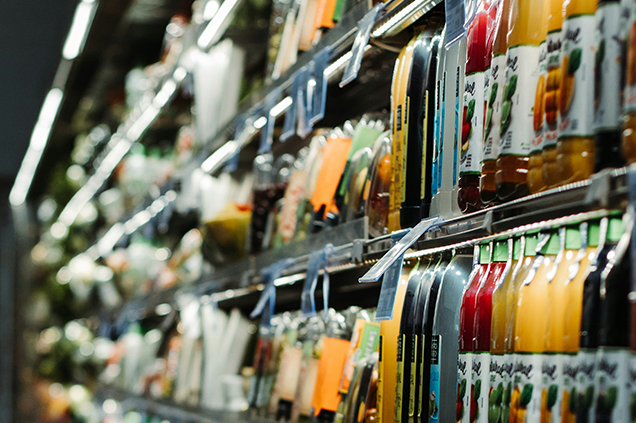from Deakin University’s Global Centre for Preventive Health and Nutrition (GLOBE) within the. This piece first appeared on The Conversation.
There are renewed calls this week for the Australian government to implement a range of measures aimed at improving our diets. These include restrictions on junk food advertising, improvements to food labelling, and a levy on sugary drinks.
This time the recommendations come from a into diabetes in Australia. Its final report, tabled in parliament on Wednesday, was prepared by a comprising members from across the political spectrum.
The release of this could be an indication that Australia is finally going to implement the evidence-based healthy eating policies public health experts have been for years.
But we know Australian governments have historically been to introduce policies the powerful food industry opposes. The question is whether the current government will put the health of Australians above the profits of companies selling unhealthy food.
Diabetes in Australia
Diabetes is one of the fastest growing chronic health conditions in the nation, with more than . show the number of Australians diagnosed with the condition is set to rise rapidly in coming decades.
Type 2 diabetes accounts for the vast majority of cases of diabetes. It’s largely preventable, with among the strongest risk factors.
This latest report makes it clear we need an urgent focus on obesity prevention to reduce the burden of diabetes. Type 2 diabetes and obesity cost the Australian economy each year and preventive solutions are highly .
This means the money spent on preventing obesity and diabetes would huge amounts in health care costs. Prevention is also essential to avoid our health systems being overwhelmed in the future.
What does the report recommend?
The puts forward 23 recommendations for addressing diabetes and obesity. These include:
- restrictions on the marketing of unhealthy foods to children, including on TV and online
- improvements to food labelling that would make it easier for people to understand products’ added sugar content
- a levy on sugary drinks, where products with higher sugar content would be taxed at a higher rate (commonly called a sugar tax).
These key recommendations echo those prioritised in a range of over the past decade. There’s they’re likely to work.
Restrictions on unhealthy food marketing
There was universal support from the committee for the government to consider regulating marketing of unhealthy food to children.
Public health groups have consistently for comprehensive mandatory legislation to protect children from exposure to marketing of unhealthy foods and related brands.
An increasing number of countries, including and , have legislated unhealthy food marketing restrictions across a range of settings including on TV, online and in supermarkets. There’s comprehensive policies like these are having positive results.

Children can be exposed to junk food marketing online.
In Australia, the food industry has made to reduce some unhealthy food ads directly targeting children. But these promises are widely viewed as .
The government is currently conducting a on additional options to limit unhealthy food marketing to children.
But the effectiveness of any new policies will depend on how comprehensive they are. Food companies are likely to rapidly shift their to maximise their impact. If any new government restrictions do not include all marketing channels (such as TV, online and on packaging) and techniques (including both product and brand marketing), they’re likely to fail to adequately protect children.
Food labelling
Food regulatory authorities are currently considering a of improvements to food labelling in Australia.
For example, food ministers in Australia and New Zealand are soon set to mandating the health star rating front-of-pack labelling scheme.
Public health groups have mandatory implementation of health star ratings as a priority for improving Australian diets. Such changes are likely to result in to the healthiness of what we eat.
Regulators are also potential changes to how added sugar is labelled on product packages. The recommendation from the committee to include added sugar labelling on the front of product packaging is likely to support this ongoing work.
But changes to food labelling laws are notoriously slow in Australia. And food companies are to oppose and delay any policy changes that might hurt their profits.
 Health star ratings are not compulsory in Australia.
Health star ratings are not compulsory in Australia.
A sugary drinks tax
Of the report’s 23 recommendations, the sugary drinks levy was the only one that wasn’t universally supported by the committee. The four Liberal and ³Ô¹ÏÍøÕ¾ party members of the committee opposed implementation of this policy.
As part of their rationale, the dissenting members submissions from food industry groups that argued against the measure. This follows a long history of the Liberal party with the sugary drinks industry to oppose a levy on their products.
The dissenting members didn’t acknowledge the that a sugary drinks levy has worked as intended in a wide range of countries.
In the UK, for example, a levy on sugary drinks implemented in 2018 has successfully lowered the in UK soft drinks and reduced .
The dissenting committee members argued a sugary drinks levy would hurt families on lower incomes. But has shown the two most disadvantaged quintiles would reap the greatest health benefits from such a levy, and accrue the highest savings in health-care costs.
What happens now?
Improvements to population diets and prevention of obesity will require a of policy reforms.
Globally, a range of countries facing rising epidemics of obesity and diabetes are starting to take such strong preventive action.
In Australia, after years of inaction, this week’s report is the latest sign that long-awaited policy change may be near.
But meaningful and effective policy change will require politicians to listen to the public health evidence rather than the protestations of food companies concerned about their bottom line.








